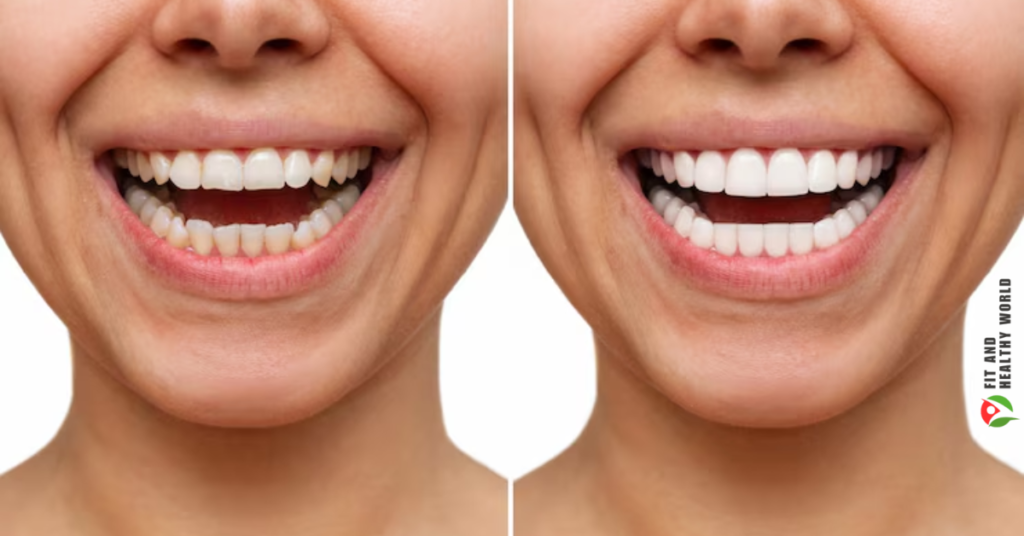Thinking about getting a crown? Understanding dental crowns before and after can help you make a confident decision. These tiny tooth-shaped covers are a game-changer in restorative dentistry. Whether it’s a cracked tooth solution or part of a bigger smile makeover, crowns offer protection and beauty.
They’re ideal for tooth damage repair, fixing shape, size, and color in one go. From front teeth to molars, a crown can transform how your smile looks and feels. Ready to explore your options? Let’s break down everything you need to know about this powerful tooth restoration treatment.
Types of Dental Crowns: Which One is Right for You?
There are many dental crown materials, and each type has its benefits. All-ceramic crowns and eMax crowns look very natural. Pressed ceramic crowns are strong and also look real. Porcelain-fused-to-metal crowns are durable and good for back teeth.
Choosing the right one depends on your needs and budget. Here’s a table to help you compare:
| Type | Looks Natural | Durability | Cost (USA Avg) |
| All-Ceramic Crowns | Yes | Medium | $1,000-$1,500 |
| eMax Crowns | Yes | High | $1,200-$1,800 |
| Pressed Ceramic Crowns | Yes | High | $1,000-$1,700 |
| Porcelain-Fused-to-Metal | Moderate | Very High | $900-$1,400 |
Dental Crown Procedure Step-by-Step
What to expect during a dental crown procedure? It usually takes two visits. First, the dentist will examine your tooth. They clean it, remove decay, and shape it. Then, they take an impression and place a temporary dental cap. This helps protect the tooth.
On the second visit, the dentist fits the custom tooth crown. They check for crown color matching and make sure it fits your bite. If needed, they adjust it. This is the crown fitting and adjustment period. When everything is perfect, they cement the crown into place.
Before Getting Dental Crowns: Problems They Solve
People get crowns to fix many issues. Common reasons include cracked tooth solution, worn teeth, and large cavities. Crowns are great for teeth that are weak or broken. They help restore strength and stop the damage from getting worse.
Crowns are also used after root canal and crown procedures. This keeps the tooth safe and strong. For people who feel self-conscious about discolored teeth, crowns offer a natural-looking fix. They are a smart choice in functional dental restoration and long-term care.
After Getting Dental Crowns: Life-Changing Benefits
A crown can change your life. It makes your tooth strong again. You can eat, speak, and smile with confidence. Many people report a huge dental health improvement after getting crowns. Crowns also help with tooth sensitivity after crown placement.
Smile transformation with crowns is real. Some patients say they feel younger and happier. Crowns are part of a full smile makeover and even help with bite correction. It’s a long-term dental investment that pays off in looks and health.
Porcelain Crowns vs. Porcelain Veneers: What’s the Difference?
Choosing between crowns and veneers depends on your dental needs. Crowns cover the whole tooth, while veneers only cover the front. Crowns are better for damaged or weak teeth. Veneers are great for minor color or shape fixes.
If your tooth is cracked or had a root canal, you need a crown. Veneers are for looks, not strength. Crowns vs veneers for front teeth is a common question. Dentists will guide you based on the tooth’s condition. Crowns provide both strength and beauty.
Dental Crowns on Front Teeth: Achieving a Natural Look
Front teeth are tricky. You want them to look natural. That’s why custom crowns that match natural teeth are so important. Dentists use special tools to match color, shape, and size. This gives a seamless smile.
Materials like eMax crowns or all-ceramic crowns work best here. They are translucent like real teeth. A skilled dentist will make sure your front dental crown looks just right, not bulky or fake. It’s a key step in a natural-looking dental solution.
Common Concerns About Dental Crowns (And the Truth)
Many people worry about dental crown discomfort or pain. But the truth is, the process is usually smooth. Your dentist uses numbing tools to prevent pain. Most patients feel fine within a day or two.
Managing dental crown sensitivity is easy with care. Some feel slight discomfort at first, but it goes away. And no, crowns don’t fall out easily if done right. If you’re asking, “Are dental crowns worth it?” the answer is yes, for most people.
Caring for Your Dental Crowns: Maintenance Tips
Crown aftercare is simple. Brush and floss like normal. But be gentle. Don’t chew hard things like ice or pens. These habits can crack your crown. Regular check-ups also help in crown maintenance.
Ask your dentist about night guards if you grind your teeth. This keeps the crown safe while you sleep. Follow the tips, and your dental cap can last for years. Clean, flossed, and protected crowns stay strong.
Real Before and After Results: Success Stories
Let’s talk about a real dental crown case study. Sarah from Texas had stained, cracked front teeth. She got two custom tooth crowns. After treatment, she felt more confident and started smiling more. Her story shows the power of dental crowns for confidence boost.
Another story is Jake from California. He chipped a tooth while biking. He chose the same-day dental crown process and was smiling again in hours. His crown matched perfectly and gave him back his smile. These smile makeover stories prove how crowns truly help.

Cost of Dental Crowns in the USA: What to Expect
The cost of a dental crown in the U.S. can vary a lot. It depends on the material, dentist’s skill, and where you live. On average, prices range from $900 to $1,800 per tooth. Crowns are not cheap, but they are a long-term dental investment.
Some insurance plans cover part of the cost. It’s best to ask your provider first. Also, many clinics offer payment plans. So don’t let cost stop you from fixing your smile. Crowns are a wise choice for tooth restoration and dental health improvement.
Dental Crowns Before and After Photos: What to Look For
Before and after photos can show real results. Look for natural color, no bulky edges, and symmetry. If the crown blends in, it’s a good one. Custom crowns that match natural teeth look seamless and clean.
Stay away from crowns that look too white or thick. Good crowns look like real teeth. Photos help you choose the right dentist. Use them to compare different outcomes before your treatment. The right crown can change everything.
Conclusion
Dental crowns offer a powerful mix of beauty and strength. They fix damage, improve confidence, and protect teeth long-term. With the right care, your crown can last for many years. Talk to your dentist today to see how crowns can transform your smile.
(FAQs)
What is the downside of crowns on teeth?
Crowns can sometimes cause tooth sensitivity, may require reshaping of the natural tooth, and can chip or loosen over time.
Why does it stink under my crown?
A bad smell usually means trapped food, decay, or bacteria under the crown—often due to poor fit or hygiene.
Why don’t dentists use metal crowns anymore?
Metal crowns are strong but less popular now due to their unnatural look and the rise of more aesthetic materials like ceramic and porcelain.
How long does it take for a dental crown to feel normal?
Most people adjust to a crown within a few days to two weeks, depending on bite alignment and sensitivity.
How bad can a tooth be and still get a crown?
As long as there’s enough healthy root and some tooth structure left, a severely damaged tooth can usually still support a crown.



